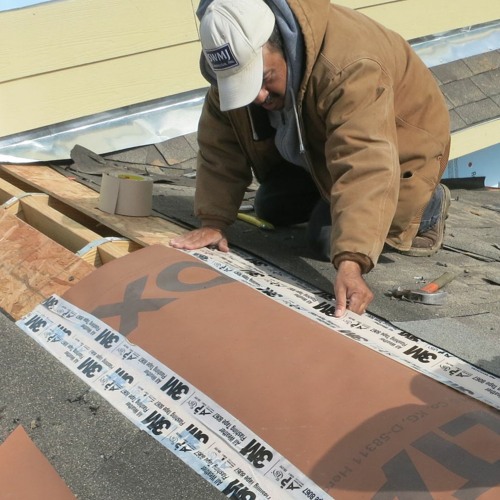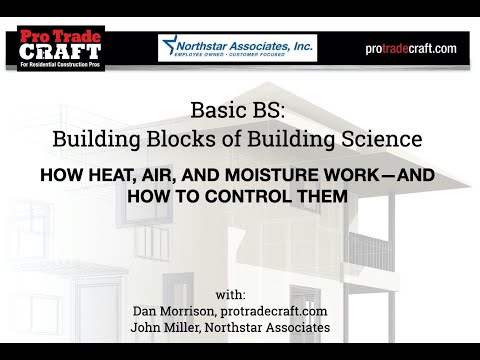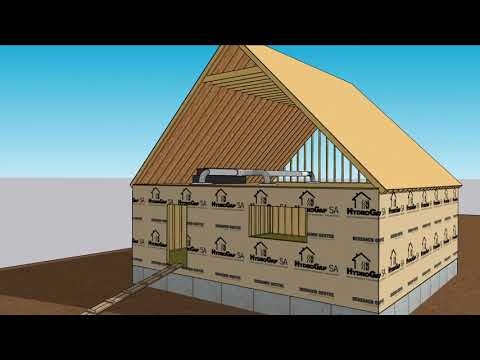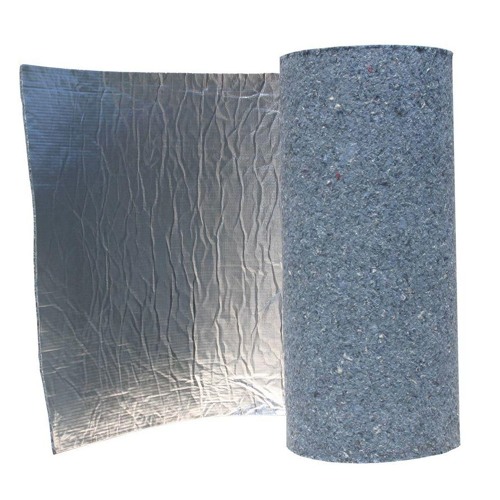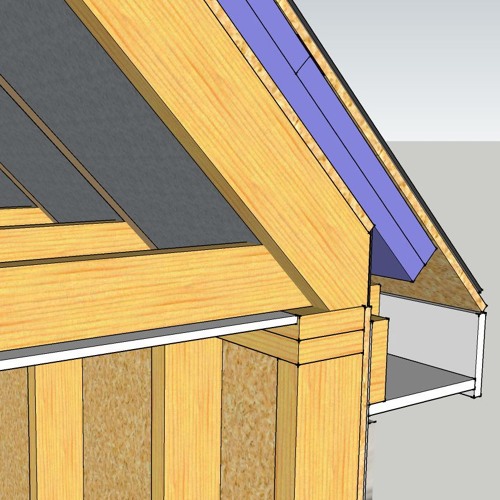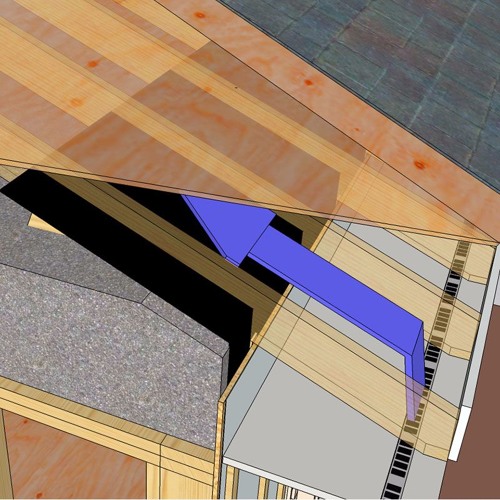"Where the hell did the terms, ‘hot roof’ and ‘cold roof’ come from?”
For this episode, we are joined by Dr. Joseph Lstiburek, who some people call Joe Listerbuck. Dr. Joe is one of the founders of Building Science Corporation and perhaps the best-known building scientist in North America.
“Why don’t you just ask me, Joe, where did the terms hot roof and cold roof come from?"
Joe, where did the terms hot roof and cold roof come from, cause they don’t make sense to me.
"Well, it made sense at the time. Remember the only option that we had—way, back when, in ancient history, when my Toronto Maple Leafs were winning Stanley Cups—was attic ventilation.
And the idea to ventilate an attic was to make the roof deck cold,
People in the north had ice damming problems, so they wanted a colder roof assembly to prevent the snowmelt.
People in the South were overheating in their living rooms and they wanted to exhaust all of the hot air in their attics, which would hopefully lower the temperature inside the house.
… and it didn't work out that way because the principal heat transfer is radiation, and venting has minimal impact on the radiation exchange.
Even vented attics in the South are hot as hell when you go sit in them.
And so the idea was that, if I vent my attic, the attic is going to be filled with cold air, because in the winter time, the air outside is cold, and so I'm going to have a colder roof when I ventilate.
So far so good for yankees.
And all right. So that's where the term cold roof comes from because bringing in outside air. Makes your attic colder and the wintertime.
Now, in the south, we ventilated our attics to get air changes in the house.
Using one of those gi-normous whole house fams that are like four feet in diameter and are installed into attic floors.
And by doing that, we would take warm air out of the attic. And we were wanting to pull air into the house, from through the windows to create air change down below.
So the southern ventilation strategy was to make the house cooler. The northern strategy made the attic colder, eliminating ice dams.
So ventilation is associated with the term, cold.
Neither strategy was intended to make the roof shingles last longer because
in the south venting an attic, it doesn't make the shingles colder.
Because you cannot ventilate radiant heat
It doesn't make the roof that colder.
Because you cannot ventilate radiant heat
The only way you're colder in the south is that you suck air-conditioned air out of your house into the attic, right?
Right. And that’s expensive.
And what we learned is that the only way you'd actually save any energy and be more comfortable, is the outside temperature had to be below 65 degrees.
It sounds like a Vermont summer, but not a summer in HOTlanta.
Then we found that when we started venting our attics up north, we started actually having attic moisture problems.
Instead of an ice problem on the roof, there were now water problems inside the attic, which seemed to be bringing the problem closer to home.
It was unreal because the whole idea of venting up north was to solve an attic moisture problem. So, attic moisture problems could only be solved by ventilation up north in poorly-insulated attics.
Fortunately for most attic ventilation experts in the 70s, most attics were poorly insulated.
In most attics, there is moisture vapor that comes from the living space below, because no attic floor is perfectly sealed and moisture vapor rides on air currents. In a ventilated attic, cold air is introduced, which significantly lowers the amount of moisture it can hold, so the moisture condenses on the underside of the roof deck.
If the attic is leaky, enough heat escapes the house to temper the cold incoming air allowing the attic air to hold on to more moisture, reducing the condensation on the roof deck.
And so we designed the original attic ventilation ratios in cold climates in poorly insulated attics to solve moisture problems.
And ice dams.
Then what did we do? We insulated the attics up, the Ying Yang and wazoo, and we didn't get enough energy for the attic ventilation to actually remove moisture.
Now that attic ventilation made the attic very, very cold. And of course, they began to rot because there wasn't energy available to pick up the moisture. So ended up having to air-seal the ceilings.
To remove the moisture source from the attic.
So the approach now, in a cold climate, is reasonable, you know, you have an airtight ceiling, you put a lot of insulation up there, any ventilate, the attic to control high standing, and that attic ventilation makes that roof cold. So we have a cold roof.
Turns out, that it’s not easy to make your attic ceiling airtight. Because of all the big and little holes in ceilings like light fixtures, wall plates, attic hatches, and chimneys.
We found it was a lot easier to have the roof deck itself, the structural deck to be the air barrier and put the insulation on top of it.
This should be beginning to sound familiar to people.
What that ended up doing was it made the underside of the roof deck—warm.
Because the roof deck is now inside the insulation layer.
So, by adding insulation on the top, And not venting, it became
Wait for it…
a hot roof.
BOOM.
So we have a cold roof that was ventilated.
And outside the thermal boundary
And we got into trouble with that, in not actually not working, unless we got the ceiling airtight.
Which is difficult to do well,
So we made the deck itself, airtight and put insulation on the top of it, and that made the deck
HOT.
warm.
Dammit.
So that's where the term hot roof, cold roof came from.
Roof venting was implemented in the north to combat ice dams and in the south to combat uncomfortable houses. Air conditioning attempted to address the comfort problem in the South. By then, the previously attempted solution was baked-in to standard construction practice.
Now, where do you have massive problems with ventilating your attic? Where you have air conditioning ductwork in your attic in a hot, humid climate.
And now, the rationale for venting the roof was shifting to shingle life, possibly for nefarious purposes.
and it never had anything to do with the temperature of the shingles. What determined the temperature of the shingles was the color of the shingles, what they were made out of, and whether you were in basically Houston or Minnesota.
Now the folks that marketed bad building science but good marketing we're saying Look, we can increase the life of our shingles. We can help increase the life of your shingles by venting the attic because we're going to make it colder, It turned out that that had absolutely no effect, you know, one or two degrees, and so, you know, the shingle manufacturers—a m I allowed to use the word deliberately lied?
Ummm. You just did.
Well, apparently, I did, they deliberately lied, and there are people to this day that are saying, “Oh yeah, we've got to vent the attic to make it cold, so the shingles last longer!” Get a light-colored freaking shingle.
This is, by the way, not new physics. We've known about this since the 60s.
When physics was INVENTED!
When we started building unvented roofs in cold climates because they're easier to make the ceiling airtight...
To handle the interior moisture,
...we rediscovered ice damming. and so we ended up having to put a vented over-roof over the unvented under-roof basically.
If that sounds bizarre, it’s because it is.
And so it's kind of bizarre that I take out a hot roof technology and put a cold roof over it.
It’s like putting a perfect northern roof over a perfect southern roof. Better together.
To summarize, vented roofs always work everywhere, except for most places most of the time. They work great in leaky old houses owned by people who can afford huge energy bills.
Now, we also have the issue of wildfire.
But that’s a topic for another day because this isn't 45 minutes of BS; it’s SEVEN. I’d like to thank my friend Dr. Joe for joining me on this BS journey and thank you for putting up with it. Don’t forget; you get paid for what you do and what you know. Now, you know what a HOT roof is.
